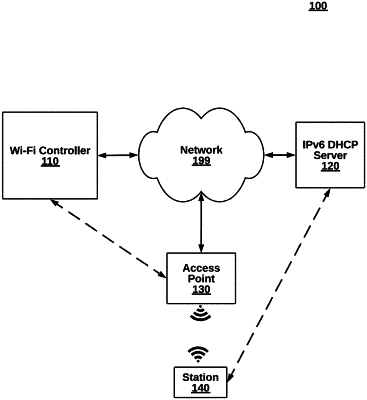|
1. A Wi-Fi controller coupled to a Wi-Fi network, for eliminating old IPv6 addresses for quarantined stations in stateless mode after transitioning between VLANs (virtual local access networks), the network device comprising: a processor; a network interface communicatively coupled to the processor and to the Wi-Fi network; a memory, storing: an access point management module to receive data packets from an access point providing Wi-Fi access to a station over a plurality of VLANs, wherein the station is in stateless mode; a VLAN identification module to identify a mismatch between a first prefix of a first IPv6 address for a data packet corresponding to a first VLAN on which the data packet was sent from the station, and a prefix of a second IPv6 address for a second VLAN, wherein the first VLAN comprises a quarantine VLAN for stations onboarding to the Wi-Fi network and the second VLAN comprises a non-quarantine VLAN; and an RA (router addresser) reconfiguration module to, responsive to the VLAN mismatch identification, transmits an RA to the station with valid lifetime and a preferred lifetime of 0, wherein the data packet is moved from the first VLAN to the second VLAN responsive to transitioning the station from the first VLAN to the second VLAN, and wherein subsequent communications use the second IPv6 address.
|
